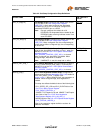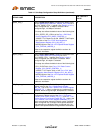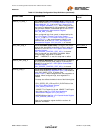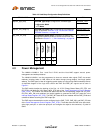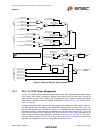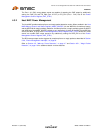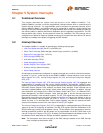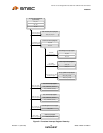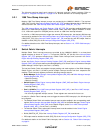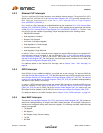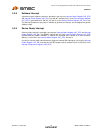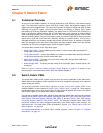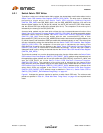
Two Port 10/100 Managed Ethernet Switch with 16-Bit Non-PCI CPU Interface
Datasheet
SMSC LAN9311/LAN9311i 49 Revision 1.4 (08-19-08)
DATASHEET
Chapter 5 System Interrupts
5.1 Functional Overview
This chapter describes the system interrupt structure of the LAN9311/LAN9311i. The
LAN9311/LAN9311i provides a multi-tier programmable interrupt structure which is controlled by the
System Interrupt Controller. The programmable system interrupts are generated internally by the
various LAN9311/LAN9311i sub-modules and can be configured to generate a single external host
interrupt via the IRQ interrupt output pin. The programmable nature of the host interrupt provides the
user with the ability to optimize performance dependent upon the application requirements. The IRQ
interrupt buffer type, polarity, and de-assertion interval are modifiable. The IRQ interrupt can be
configured as an open-drain output to facilitate the sharing of interrupts with other devices. All internal
interrupts are maskable and capable of triggering the IRQ interrupt.
5.2 Interrupt Sources
The LAN9311/LAN9311i is capable of generating the following interrupt types:
1588 Time Stamp Interrupts (Port 2,1,0 and GPIO 9,8)
Switch Fabric Interrupts (Buffer Manager, Switch Engine, and Port 2,1,0 MACs)
Ethernet PHY Interrupts (Port 1,2 PHYs)
GPIO Interrupts (GPIO[11:0])
Host MAC Interrupts (FIFOs)
Power Management Interrupts
General Purpose Timer Interrupt (GPT)
Software Interrupt (General Purpose)
Device Ready Interrupt
All interrupts are accessed and configured via registers arranged into a multi-tier, branch-like structure,
as shown in Figure 5.1. At the top level of the LAN9311/LAN9311i interrupt structure are the Interrupt
Status Register (INT_STS), Interrupt Enable Register (INT_EN), and Interrupt Configuration Register
(IRQ_CFG).
The Interrupt Status Register (INT_STS) and Interrupt Enable Register (INT_EN) aggregate and
enable/disable all interrupts from the various LAN9311/LAN9311i sub-modules, combining them
together to create the IRQ interrupt. These registers provide direct interrupt access/configuration to the
Host MAC, General Purpose Timer, software, and device ready interrupts. These interrupts can be
monitored, enabled/disabled, and cleared, directly within these two registers. In addition, interrupt
event indications are provided for the 1588 Time Stamp, Switch Fabric, Port 1 & 2 Ethernet PHYs,
Power Management, and GPIO interrupts. These interrupts differ in that the interrupt sources are
generated and cleared in other sub-block registers. The INT_STS register does not provide details on
what specific event within the sub-module caused the interrupt, and requires the software to poll an
additional sub-module interrupt register (as shown in Figure 5.1) to determine the exact interrupt
source and clear it. For interrupts which involve multiple registers, only after the interrupt has been
serviced and cleared at its source will it be cleared in the INT_STS register.
The Interrupt Configuration Register (IRQ_CFG) is responsible for enabling/disabling the IRQ interrupt
output pin as well as configuring its properties. The IRQ_CFG register allows the modification of the
IRQ pin buffer type, polarity, and de-assertion interval. The de-assertion timer guarantees a minimum
interrupt de-assertion period for the IRQ output and is programmable via the INT_DEAS field of the
Interrupt Configuration Register (IRQ_CFG). A setting of all zeros disables the de-assertion timer. The
de-assertion interval starts when the IRQ pin de-asserts, regardless of the reason.
Note: The de-assertion timer does not apply to the PME interrupt. Assertion of the PME interrupt
does not affect the de-assertion timer.



